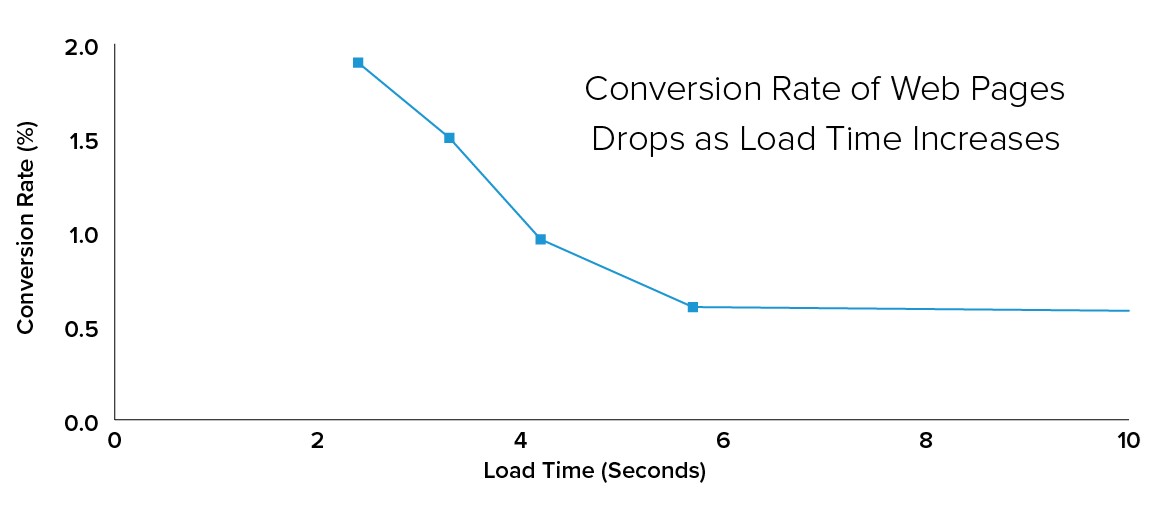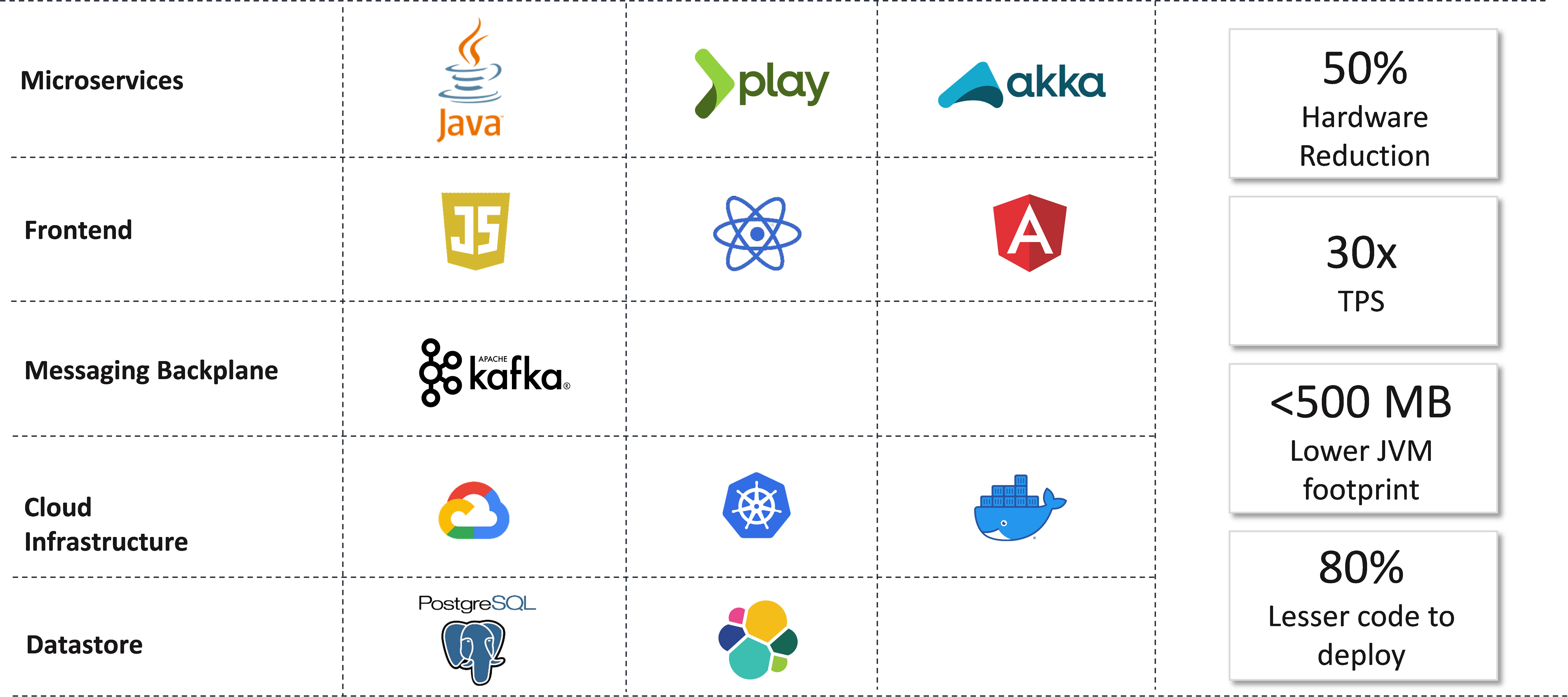- Importance of site speed and the impact it has on conversion rates
Introduction
A typical online user’s journey starts on a landing page, involves a login, goes through Product Listing Pages (PLP), Product Detail Pages (PDP), Cart and Checkout page interactions before an order is created

An acceptable average page load time for an enterprise grade eCommerce site is between 3 to 5 seconds with the gold standard being below 2 seconds on a 4G connection. The conversion rate rapidly drops as the load time increases beyond this point

Optimizing the frontend can take us only so far
Most of us are aware of techniques like GZIP compression, using responsive/optimized images and videos, enabling prefetching, removing unused CSS & JS and using asynchronous loading mechanisms, leveraging lazy load, using caching, optimizing page redirects, using minification, reducing DNS lookups, reducing plugins and external scripts to improve the overall site performance.
These techniques are well known, and businesses have made the task of improving page load times as their number one priority. With frontend optimization, faster network connection speeds being available, across all devices, including mobile, one would expect that the average page load time to have steadily decreased over time
Unfortunately, this has proved to be more difficult to achieve with most eCommerce sites not performing as they should. They are slow, unreliable, frequently crash during high sale events, suffer security breaches. These sites are mostly hosted on on-premise options, and built with legacy backend technologies, which have not been able to keep pace with increased traffic situations customer expectations
Limitations of traditional platforms
Considering the circumstances prevalent 15-20 years ago, traditional monolith platforms were the primary option if businesses wanted to implement enterprise eCommerce solutions. However, these platforms were pretty complicated, large, and offered heavy-weight programming models which were inefficient and unstable. They needed a large number of costly resources to work, were characterized by having a single point of failure, used a single database and heavily leveraged the CPU making horizontally scaling very difficult. They stored state on the VM & typically required large footprint (in GB). They were characterized by blocking code, expensive transaction management, had poor support for CICD and involved very high IDE & web container startup time - almost 20 to 30 mins each time.
All these factors contribute to slow sites and there was only so much that technologists could do against these limitations
Microservices based solutions built with modern tech stack power high performant sites
Solutions built with high-speed reactive microservices architecture can power highly responsive (sub-2 second load time) omnichannel eCommerce applications at scale. Such solutions use in-memory operational data, efficient queue handoff, messaging/streaming, sharding services, bulkheads, circuit-breakers, ability to handle back-pressure and micro-batch streaming, along with async, non-blocking calls to handle more calls on a single node. All this allows them to effectively employ vertical and horizontal scaling allowing it to do more with less hardware
In addition, new advancements in technology have brought in modern concepts and highly efficient architectural principles like Headless, API-First, Cloud Native, Responsive, CloudOps, Auto Scaling, Self-Healing, High Availability, High Throughput, Low latency response times, and cloud agnostic container-based architecture amongst others, which legacy platforms were unable to leverage
Some of the technologies used in building such scalable solutions are illustrated below:

AI Enterprise Inc. (AIE) is a Delaware Corporation who specializes in helping organizations redefine engaging customer experiences and deliver frictionless custom commercial and consumer commerce solutions. Our Solutionists bring over two decades of expertise in leading Commerce and Content platforms to help our clients blend cloud and on-premise solutions, mature their DevOps, enhance engagement with machine intelligence and embrace modern architectures in a strategic and adaptable fashion
Some of the constructs that go into building such high performant solutions (sub-2-second page load times) are listed below. Our solutions:
- Support stateless approach and distributed in-memory state management, ensuring that the failure of an individual instance does not impact the entire application. In addition, it allows the load to be easily distributed seamlessly across multiple instances. It is also built using async, non-blocking I/O, allowing parallel processing, powerful multithreading allowing the system to be highly responsive, and resilient to failures
- Are built on Play and Akka technologies, allowing them to easily scale horizontally and seamlessly handle failures while continuing to operate at the scale demanded by the business. They can easily deal with dynamic traffic surges and intense events like Black Friday and Cyber Monday. The resource consumption is much lower with Play and Akka, since threads are no longer blocked up to serve requests, especially for I/O intensive tasks like making calls to remote services, Databases, NoSQL stores etc
- Implement CQRS allowing them to maximize performance, scalability, and security. The Command and Query Responsibility Segregation (CQRS) pattern allows our solutions to separate the read and update operations for a data store and prevents update commands from causing merge conflicts
- Another fundamental change to the way our solutions are architected is Event Sourcing. Traditional systems rely on the database to manage their current state and information and have multiple drawbacks. An event sourced approach focuses on recording all of the activities which have occurred within the application as a series of events allowing for rapid reconstruction of states bringing in extreme flexibility and high fail-safety
- Our solutions are tested, deployed, and managed as Cloud Native solutions and hence are able to leverage all the advantages of the cloud computing delivery model to the maximum extent. This approach allows them to leverage CICD and DevOps, Agile, methodologies, different cloud platforms, containers like Kubernetes, Docker, OpenShift, allowing them to revolutionize the way in which teams run and manage the platform and, automating and hugely improving the development and deployment process at a much lower cost than traditional models. They are also fault tolerant and self-healing, highly scalable with the ability to auto-provision
- Our solutions are built with Headless architectural principles allowing them to be a collection of digital services supporting eCommerce, rather than a monolith solution. This approach has allowed the decoupling of the front-end and back-end layers bringing in high flexibility and allowing highly customized experiences and the freedom to plan future growth. In addition, Headless Commerce allows for services to be exposed as APIs allowing easy connection to external systems
Conclusion
There are many eCommerce platforms available today, some legacy, others still legacy but with a wrapper leveraging some of the modern technologies available, still others built with partial modern technologies. However, none of these platforms are able to build a comprehensive platform designed to take advantages of all the best-in-class architectural approaches and modern principles, combining them with modern technology stack to provide an exceptionally powerful, future-proof platform
How can AIE Help?
AIE has long and deep experiences in building robust, scalable, highly performant, fault-tolerant, custom eCommerce solutions using microservices technologies for enterprises. If you are interested, then contact us for a free consultation and quote.
